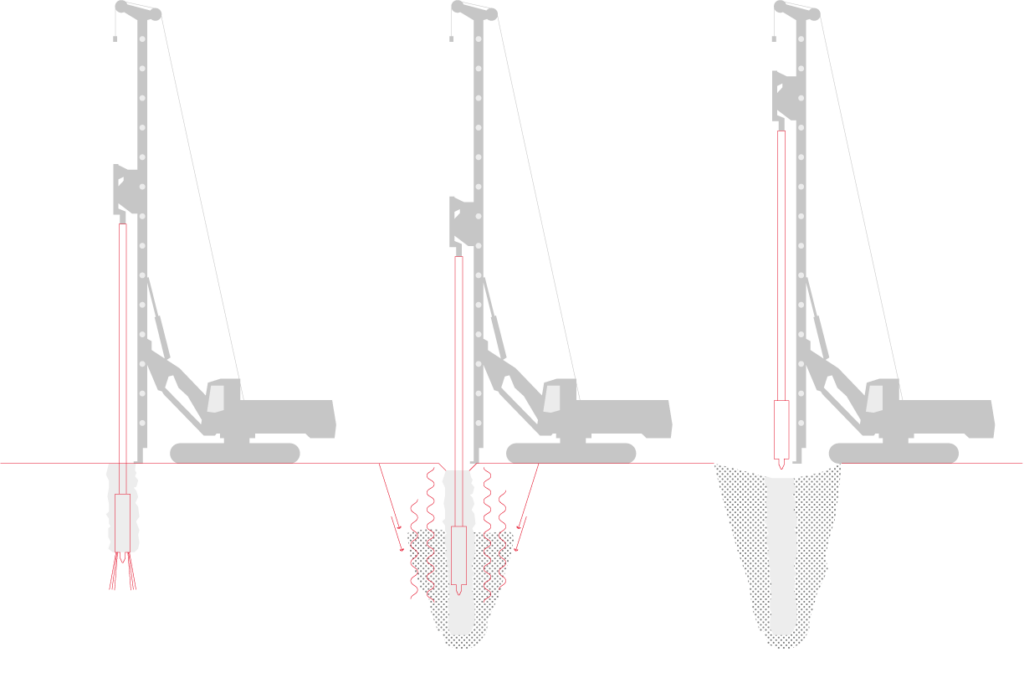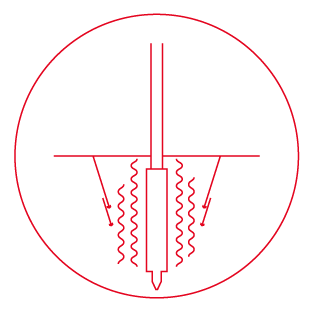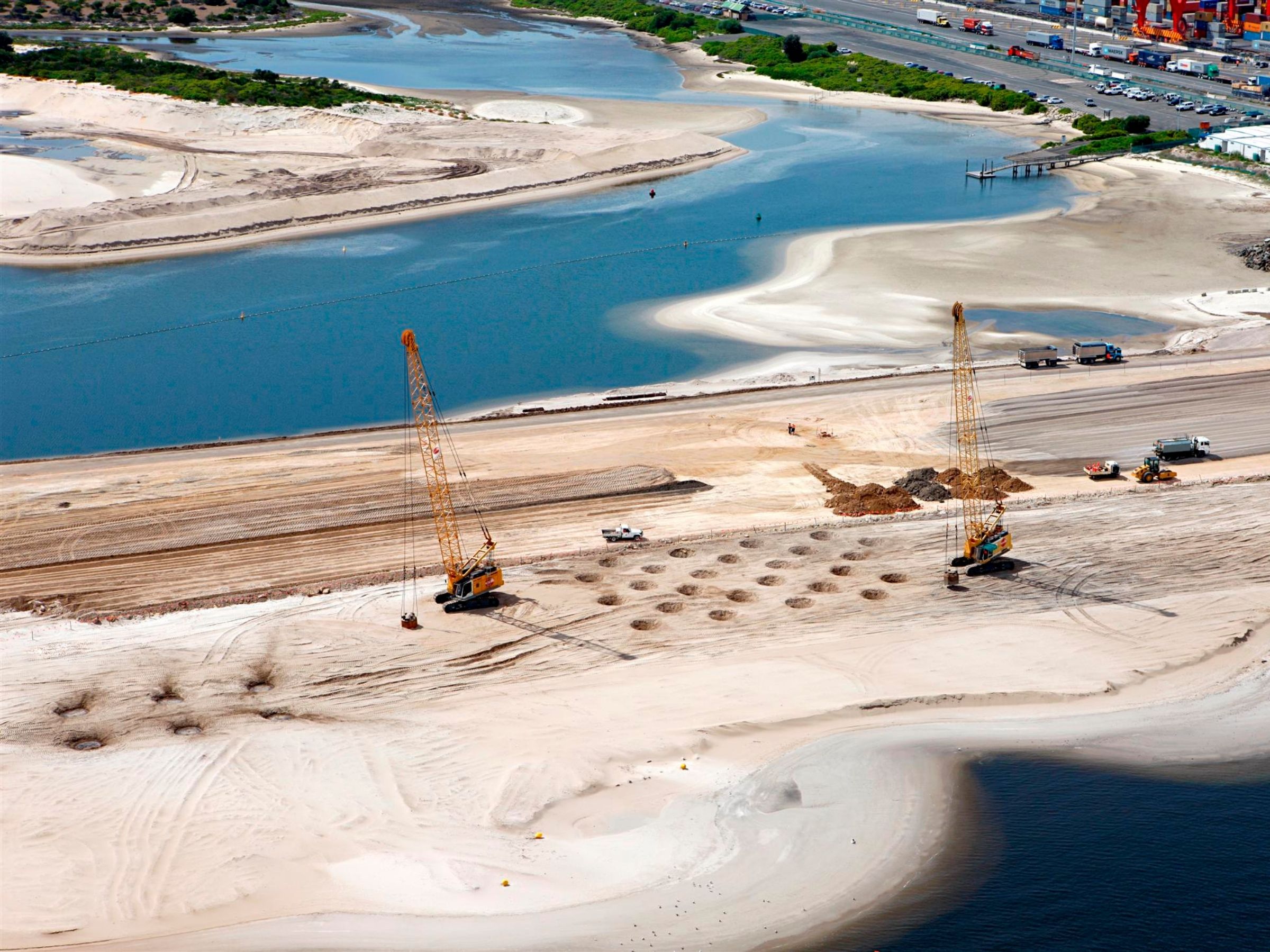Presentation and key elements
What is it?
Vibrocompaction is executed using a vibratory probe. Under the effect of its weight, jetted water, and sustained horizontal vibrations, the vibratory probe rapidly reaches the desired depth. The probe is then gradually lifted in successive steps, producing a 2m to 4.5m diameter cylinder of compacted ground.
When and why use it?
Loose granular soil or fill can be compacted at depth through the insertion of vibratory probes with large volumes of water to generate localised liquefaction of the soil. This enables the particles to rearrange to achieve a denser formation and thus increases the overall density of the soil.
It is used to control and reduce settlement, mitigate liquefaction, stabilise or treat hydraulic fill and limit lateral earth pressure behind quay walls.
💡 Menard’s tip
Vibrocompaction approximately achieves settlement of between 7% to 10% of the soil thickness treated.




